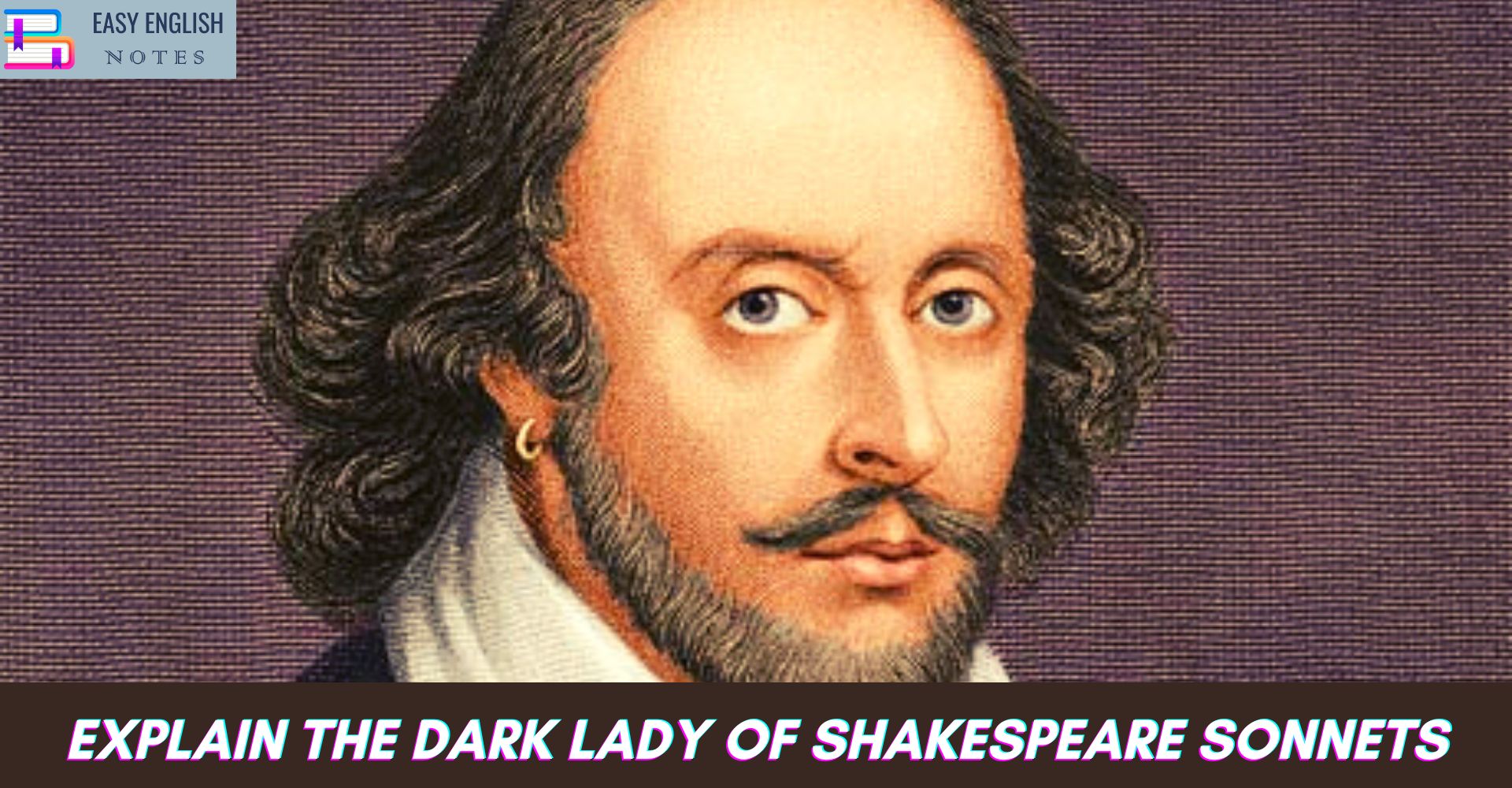According to Edward Dowden, “Shakespeare at some time of his life was snared by a woman. The reverse of beautiful, according to conventional Elizabethan standard – Dark-haired, Darkeyed, Pale cheeked (Sonnet 132): skilled in touching the virginal, skilled also in playing on the heart of man: who could attract and repel. Irritate and soothe, join reproach with caress (Sonnet 145); a woman faithless to her vow in wedlock (Sonnet 142). Through her no calm of joy came to him; his life ran quicker but more troubled through her spell, and she mingled strange bitterness with its waters. Mistress of herself and of her art, she turned. When it pleased her from the player to capture a more distinguished prize. His friend. For a while Shakespeare was kept in the torture of doubt and suspicion: then confession and tears were offered by the youth He could forgive the young man beguiled and led astray. Through further difficulties and estrangements, their friendship travelled on to a fortunate repose. The last twenty-eight sonnets in Thorpe’s edition of Shakespeare’s Sonnets known as the sonnets to the Dark Lady record the poet’s passion and infatuation for an evil temptress and consequent moral chaos that rises within his heart. In the sonnets addressed to the Dark Lady, we see the bitterness and scorn of his heart, after passing through a fury, cools down to a positive calm of mind, all passions spent.
The picture of the Dark Lady that emerges from the sonnets is that of a lady without mercy, cruel and cold. But as regards her figures, she is really beautiful. The poet praises her as a woman with beauty without a heart. She is charming, she is clever, she is fond of praise; she is a coquette. Though she is not a pink and white goddess, she has enough of beauty and charm to attract and infatuate the poet. The poet knows full well her weakness, her imperfections, yet she casts a spell on the poet’s mind. The exasperated poet unable to free his soul from the serpentine coils of this cruel Dark Lady bursts into a passionate anger and declares to her, that she is ugly, she is odious to him; when this outburst is over, we find the poet again at her feel.
Also Read :
- Compare Hamlet with Macbeth, Othello and other Tragedies
- “The Pardoner’s Tale” is the finest tale of Chaucer
- Prologue to Canterbury Tales – (Short Ques & Ans)
On the whole. the picture of the Dark Lady that emerges from the sonnet addressed to the Dark Lady is that of a cruel, black haired lady, full of vices and cunningness. lying. flattery. deceit, revenge. ill ambition, pride. disdain. hell. Shakespeare sees her as the “bay where all men ride”. “the wide world’s commonplace”. “the woman who is the very refuse of her evil deeds” and who is “as black as hell. as dark as night.” He says:
“For I have sworn thee fair and thought thee bright
Who art as black as hell, as dark as night.”
Shakespeare sees the Dark Lady as an abhorrence. He has been betrayed by her, but in spite of everything. his heart still loves what his eyes despise. The references to her beauty or otherwise are frequently contradictory. In one sonnet, he writes of her as one “whose beauties proudly make her cruel.” but later on in Sonnet No. 130. he says:
“My mistress’ eyes are nothing like the sun;
Coral is far more red than her lips’ red;
If snow be white, why then her breasts are dun,
If hairs be wires, black wires grow or her head.
I have seen roses damask’d, red and white
But no such roses see I in her cheeks.”
The poet has his moments of loathing: he abhors and hates her. But this is not the whole truth. His attitude towards the Dark Lady is ambivalent, i.e.. the attitude of love-hate. In spite of all faults and weaknesses, he loves her:
“Be it lawful I love thee, as thou lov’st those
Whom thine eyes woo as mine importune thee:
Root pity in thy heart that when it grows
Thy pity may deserve to pitied be.”
The identity of the Dark Lady has been the subject of a controversy. Critics have speculated a great deal about this lady “with the raven brows, and eyes so suited.” She is identified with a certain Mrs. Mary Fitton, a maid of honour to Elizabeth (?), a mistress of the Earl of Pembroke. But these are all shadowy conjectures. Some critics are of the opinion that the Dark Lady of sonnet is a mere fiction. She has also been compared with Shakespeare’s splendid creation of Cleopatra in his play. Antony and Cleopatra. It is Sidner Lee who has compared her with Cleopatra. According to RI. Eagle, this fickle and false Dark Lady is a mere abstraction. a personification of goddess Fortune. In some of the earlier sonnets, the poet prepares us for the vagaries of this lady (Fortune) and this finds its fullest expression in the later sonnets. For example: ”
(1)”So I made lame by Fortune’s dearest spite,
Take all my comfort of thy worth and truth.”
(2) “O. for my sake do you with fortune chide.
The guilty goddess of my harmful deeds…..”
A.L. Rowse writes. “In my opinion we are never likely to know who Shakespeare” mistress was all that we know of her is internal to the sonnets, and there is no likelihood of our establishing a junction with the external world. In these circumstances, there is no point whatever in thinking up candidates for the post. More nonsense has been written on this theme than even in regard to other aspects of the sonnets.”
PLEASE HELP ME TO REACH 1000 SUBSCRIBER ON MY COOKING YT CHANNEL (CLICK HERE)











